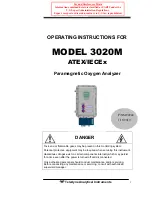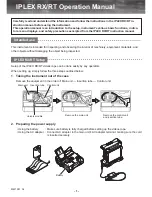
Controls and connections
LT51 User Manual
6
Keypad
The keypad is molded from silicone rubber and has 31 keys. The following
tables describe the function of each key.
Selects graphical / spectrum display mode (default: Level / Noise).
Softkeys allow selection of various graphical measurements such as
such as Level / Noise, Return Loss and Next / Loss.
Initiates sequence to connect to remote LT51 tester (on RTXa-b
terminals). Softkeys access Self-test sequence, and measurements
that support end-end automatic testing with a remote LT51 such as
Remote Loss, OS Balance, FEXT, LCL Balance etc.
Selects numeric / DMM display mode (default: previous setting).
Softkeys allow selection of various measurements such as
Level/Noise, DCV/ACV, Return Loss, Impedance, Next / Loss.
Causes the LT51 to go “off-hook” on the RTXa-b test leads and
function as a telephone dial set. Hangs up (returns to “on-hook”)
when this key is pressed again.
Perform a TDR measurement on the pair connected to the RTXa-b
terminals.
Table 2-2. LT51 measurement keys
Configure the LT51 receiver parameters at the RTXa-b terminals,
such as Zrtx, terminated, HiZ, range setting and RTX (2-Wire) or TX-
RX (4-Wire) interface
Configure the LT51 transmitter parameters at the TXa-b terminals,
such as Ztx, output level & frequency, OFF / ON mode, sweep mode
Controls operation of the marker during graphical display modes.
Functions include peak tracking, setting offsets and vertical offset.
Set the LT51 frequency span, centre frequency, BW, AFC and
Averaging / peak hold.
Access stored test results, configure measurement settings and
display settings such as the RTC, and make adjustments to the
LT51 stored calibration constants.
Table 2-3. LT51 configuration keys
Summary of Contents for UMDT51A
Page 34: ...Testing PLC Systems LT51 User Manual 22...
Page 50: ......
Page 98: ......
Page 103: ......
Page 104: ......
















































